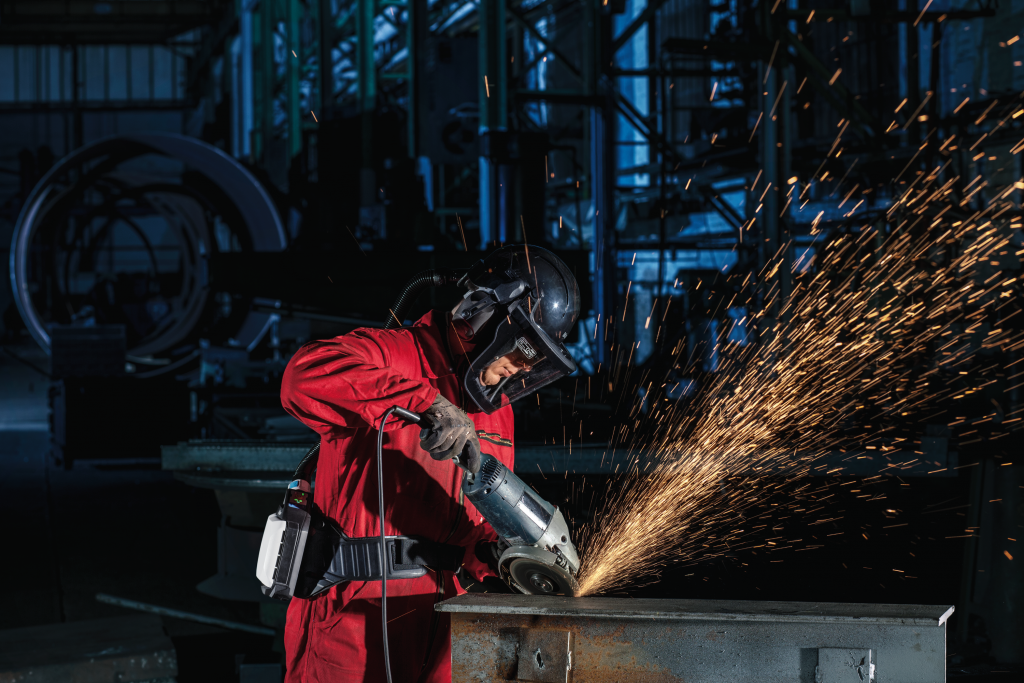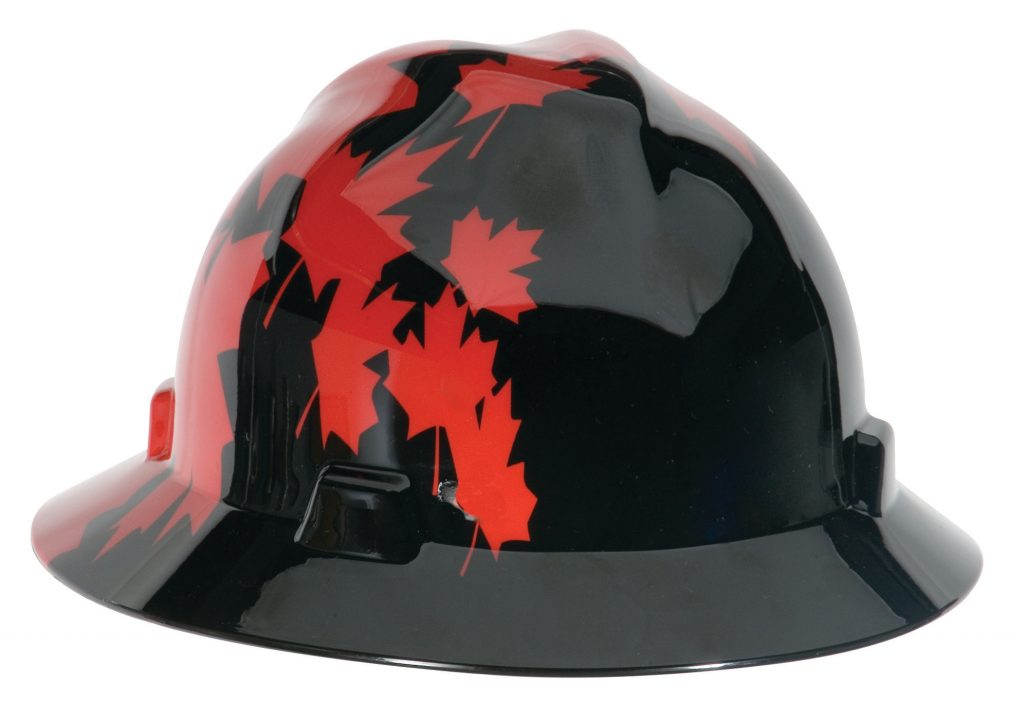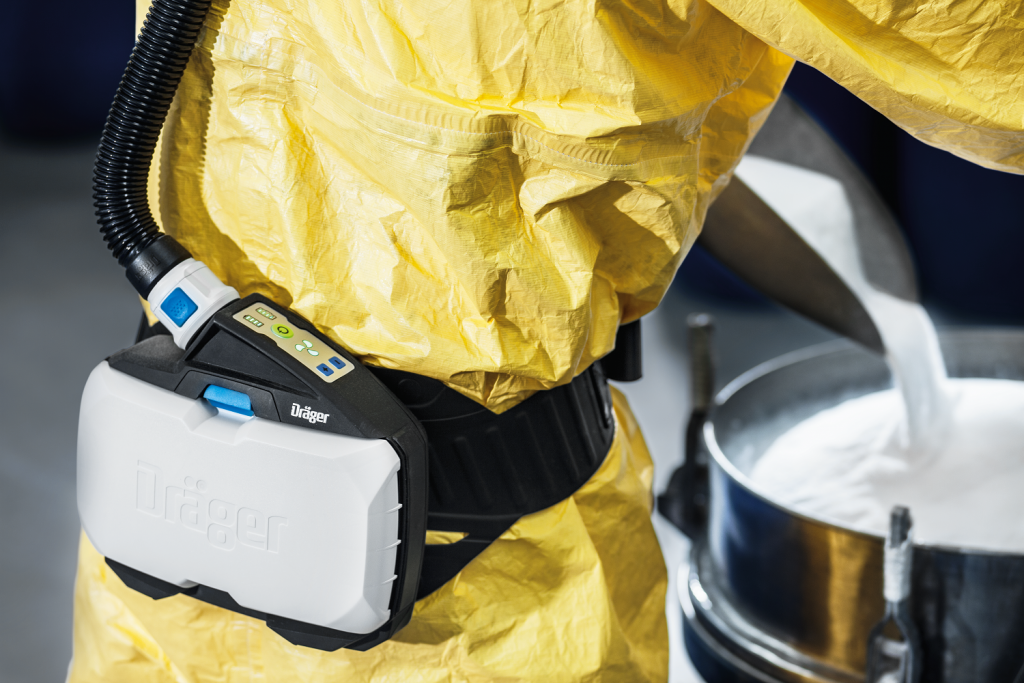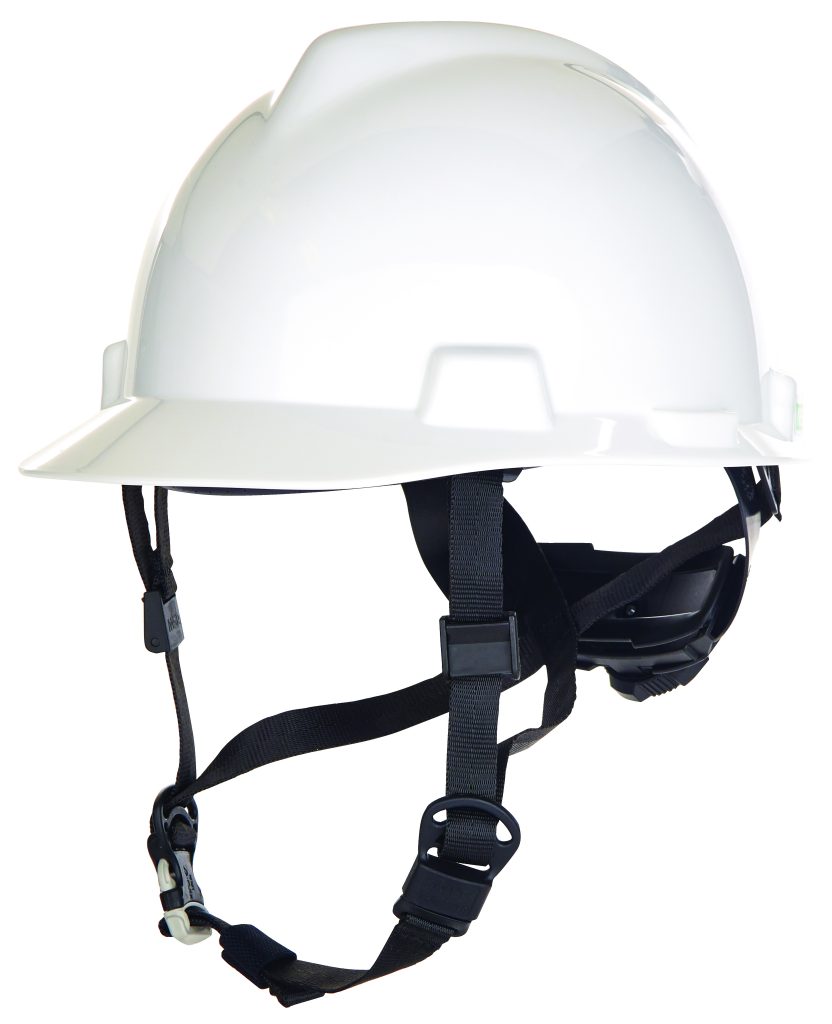
Head safety meets style
February 12, 2021
By
Meagan Gillmore
Innovations continue to improve hard hats, helmets

The COVID-19 pandemic has influenced the design of hard hats and helmets. (Photo courtesy of Draeger)
Recent style innovations for hard hats have also improved workers’ safety.
“Before, a hard hat was a hard hat — there wasn’t a lot to be done with it,” according to Brandon Griffin, national sales director for MSA in Canada.
With the company for 15 years, Griffin said in the past year, there’s been a considerable increase in different styles and a desire to make sure the hard hat is the most appropriate for the job and the worker.
“We’re really seeing a big trend of people not just ordering a hard hat for all the different variations in their facility; they’re buying the right helmet or the right hat for the job,” he said.
The increased popularity of comfortable styles in head protection means workers are also more likely to wear their PPE, said Stephanie Rudolph, application engineer with 3M Canada.
“In order to ensure that workers are being properly protected, we want to make sure that they’re actually wearing their head protection,” she said. “Making sure that it actually fits them comfortably will increase (those) chances.”

3M makes hard hats and helmets with built-in red patches that fade to white the more they are exposed to UV radiation. When the patch on the SecureFit helmet turns white, the shell needs to be replaced. (Photos courtesy of 3M)
From hard hats to helmets
3M will launch its SecureFit Safety Helmet X5000 Series helmet in Canada in the first quarter of 2021. The climbing style helmet is made with patented pressure diffusion technology in the suspension, said Rudolph.
This technology allows the suspension to adjust to the wearer’s head, reducing pressure along the front and increasing comfort.
The helmet also has a chin strap, which increases its stability and security.
MSA has launched its own climbing style helmets.
Climbing helmets are good “for working at heights, or working in confined spaces, or working in any of those areas where you would have the potential of a hard hat leaving your head,” said Griffin.
“V-Gard H1 is definitely a very exciting product for us,” he said. The helmet comes with accessories for hearing protection and face protection. It also has a chin strap.
Griffin said there’s been a greater interest in North America for chin straps.
“That’s where, in my opinion, someone’s starting to take what was a conventional construction hard hat and turning it into a helmet,” he said.
MSA sells chin straps separately from hard hats “to help people take that conventional hard hat and use it in different or potentially more practical ways.”

Workers are increasingly adding style to their head PPE, experts say. (Photo courtesy of MSA)
Increased visibility
There’s also an increase in the colours for hard hats and helmets.
Many customers want head protection with high-visibility colours, such as orange or yellow, said Griffin.
3M makes some hard hats with reflective strips applied in strategic places, and also sells the straps separately so customers can apply them on their own.
This “draws more attention to make sure that the person’s head is visible, as well as the rest of their body,” said Rudolph.
Colours aren’t just used for safety and style — some organizations design their helmets for branding or communication, added Griffin.
Designs range from “organizations that will put the logo on the front and standard safety slogans on the back, which is very, very powerful,” he said.
“We saw some additions of COVID logos reminding people of distancing, washing their hands.”
The pandemic has influenced the design of hard hats or helmets in other ways, too.
Workers across industries need to be able to wear hard hats or helmets and masks or face shields at the same time.
“Face and eye protection has become a big thing in areas where maybe you wouldn’t have seen it in the past,” said Griffin.
“We’ve always had visors, we’ve always had attachments to our hard hats that people could wear for impact protection in the field… During COVID, we came out with frameless barriers: you didn’t need the frame and all the other attachments to put it on.”
MSA also has easy-install frames created specifically for V-Gard hats, he said.
Many manufacturers have face shields that attach to hard hats and helmets.
The increased use of face shields and masks has made the need for equipment compatibility between products “more and more evident,” said Rudolph.
Rudolph and Griffin both said that they can’t guarantee that products from different companies will work together properly. Having products that fit with each other can increase safety and ensure consistency, Griffin acknowledged.

Draeger’s X-plore 8000 is available in two options — the powered air purifier respirator can attach to a hood or a helmet. (Photo courtesy of Draeger)
Powered air purifier respirators
Draeger Safety Canada Ltd. manufactures respirator headsets called powered air purifier respirators (PAPRs) that come attached to hoods or helmets.
“The PAPR does all the work of filtering out the contaminants and then providing the filtered air within the helmet or the hood set,” explained Zohaib Khan, product manager for respiratory equipment at Draeger.
The company’s X-plore 8000 comes in two options — a respirator attached to a hood or a respirator attached to a helmet.
The hood can fit over other helmets and hard hats, as well as religious head coverings. The hoods are not tested for ANSI standards for head protection; however, the helmets used in X-plore 8000 do meet ANSI standards for head protection.
“Concern about head protection is always there,” said Khan. “Now, because of COVID, we have the added concern of filtering out particles that can potentially have COVID bacteria in them. More and more customers are moving from N95 masks towards PAPR because it provides them with the helmet along with the PAPR or the blower unit itself. It’s more efficient.”

MSA sells chin straps separately from hard hats “to help people take that conventional hard hat and use it in different or potentially more practical ways.” (Photo courtesy of MSA)
Cleaning, maintenance
The pandemic has emphasized the importance of cleaning personal protective equipment regularly.
Dirt needs to be removed before disinfections are applied, said Rudolph, noting that suspensions must be cleaned, as well as hats or helmet shells.
Rudolph recommends water-based bleach products that have a chlorine concentration of 0.5 per cent or isopropyl alcohol-based cleaning products that have a concentration of 60 to 70 per cent. Heath authorities can give more specific guidance about which products to use.
Equipment should be carefully and thoroughly inspected after each use to see if there’s any potential hazards, like fraying or loose stitching in suspensions.
If a hard hat or helmet has become discoloured, that may be a sign that the hard hat or helmet has been exposed to too much UV radiation. This could cause it to become brittle and, as a result, offer less protection, said Rudolph.
3M makes hard hats and helmets with built-in red patches at the back that fade to white the more they are exposed to UV radiation. When the patch becomes white, the shell needs to be replaced. (The SecureFit helmet has a UV patch.)
Products need to fit the users correctly, and regular inspections are a key time to ensure proper fit and comfort.
“Everything we talk about goes back to getting the right hat for the job,” said Griffin.
MSA has standard-sized, small and large shells which fit different suspensions. “The suspensions are ultimately carrying the majority of the weight from a safety standpoint, he said.
“Ensuring that that suspension is properly fitting on your head, ensuring that you have the proper spacing between the shell and the suspension if you ever do take an impact, is very, very important,” said Griffin.
“The fact that we can accommodate a small and a large shell is very important.”
Meagan Gillmore is a freelance writer in Toronto.